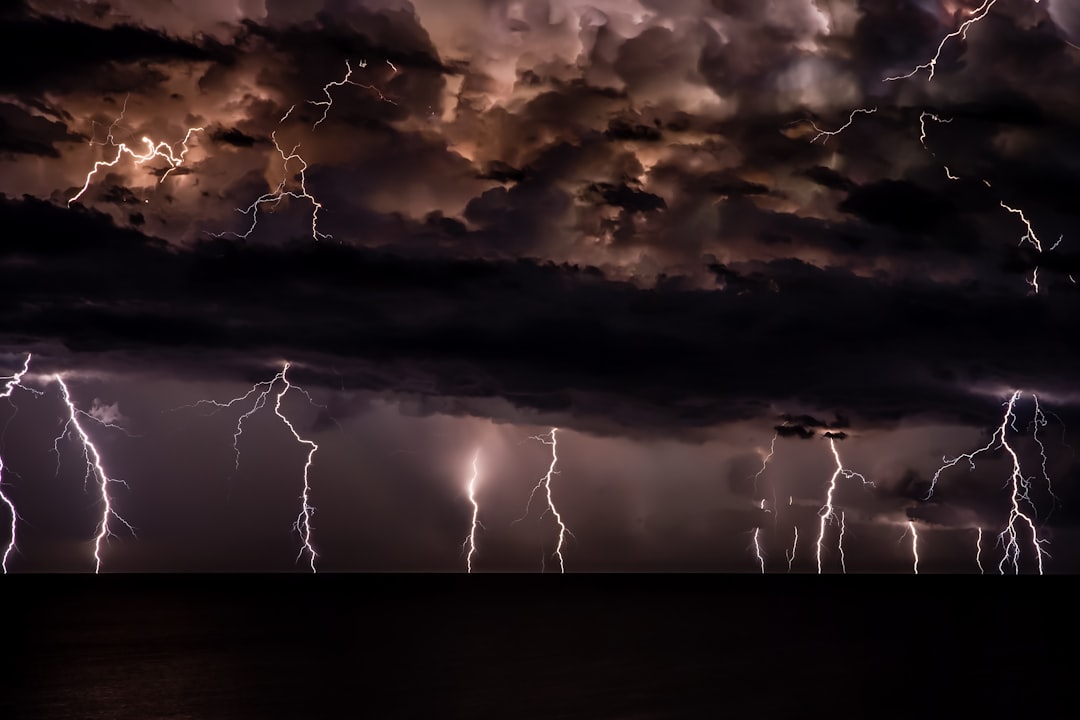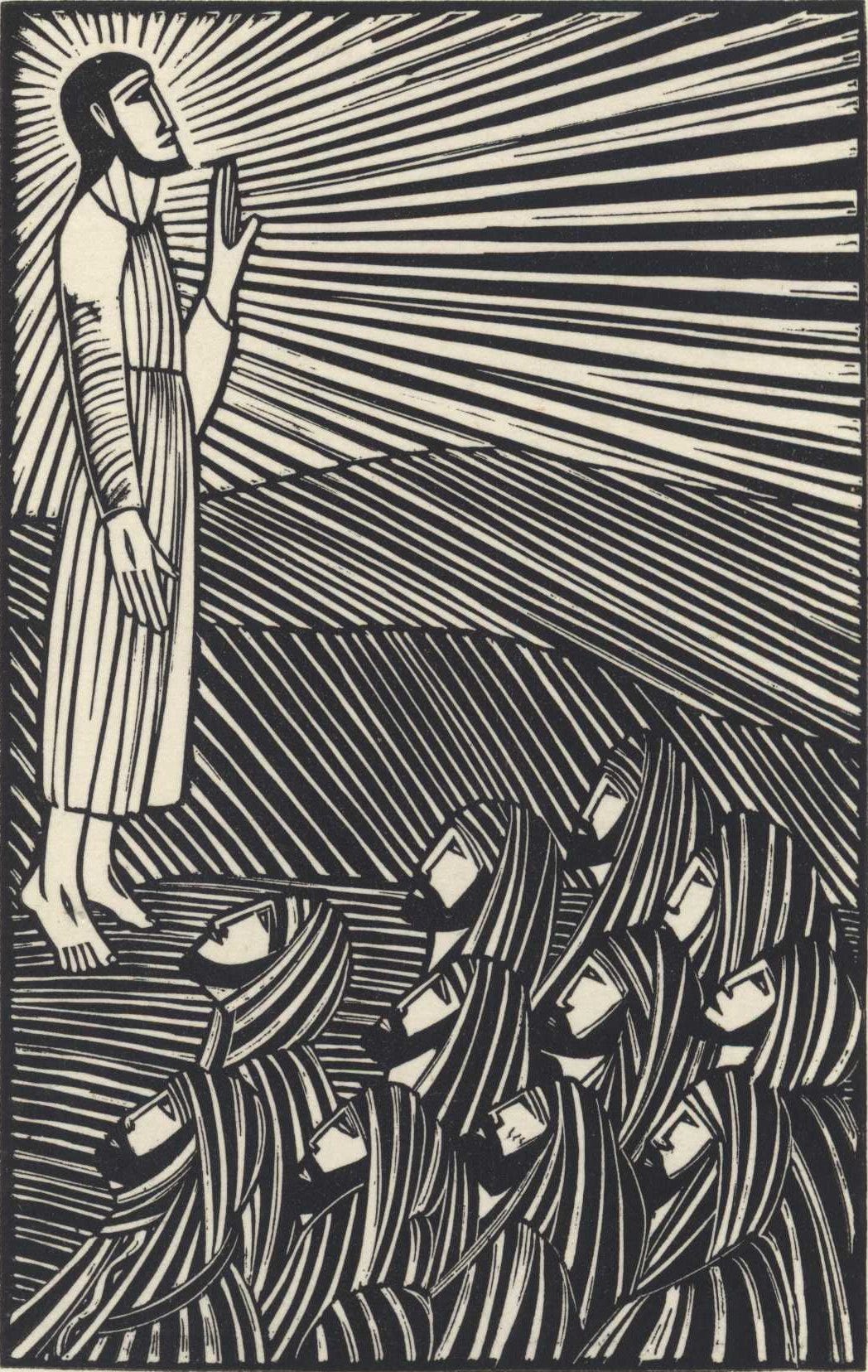Enter the Darkness
In transfiguratione quid aliud quam resurrectionis ultima gloria nuntiatur? (Gregory the Great, Moralia 32.6)
It was a vision of light which won me from atheism to Christ some twenty years ago: a totally unmerited, largely unprompted, and frankly undesired Damascene experience of everything around me and within me unified in one ray of glory. Since then, I have made it my quest, however faltering, to keep rediscovering that light, in the hope that one day, I will be able to remain in it forever.
Now it is Quinquagesima, the final Sunday before Lent: the Western Church prepares to take up the Cross once again and begin our annual pilgrimage to Jerusalem. But how can we hope to bear its weight? In a word, by “glory.” The word itself does not appear in the gospel reading for this Sunday, but saturates it nonetheless. It is the glory of the Transfigured Lord on Mount Tabor which strengthens the disciples to follow His way of suffering:
“And after six days Jesus taketh Peter, James, and John his brother, and bringeth them up into an high mountain apart, And was transfigured before them: and his face did shine as the sun, and his raiment was white as the light. And, behold, there appeared unto them Moses and Elias talking with him. Then answered Peter, and said unto Jesus, Lord, it is good for us to be here: if thou wilt, let us make here three tabernacles; one for thee, and one for Moses, and one for Elias. While he yet spake, behold, a bright cloud overshadowed them: and behold a voice out of the cloud, which said, This is my beloved Son, in whom I am well pleased; hear ye him. And when the disciples heard it, they fell on their face, and were sore afraid. And Jesus came and touched them, and said, Arise, and be not afraid. And when they had lifted up their eyes, they saw no man, save Jesus only. And as they came down from the mountain, Jesus charged them, saying, Tell the vision to no man, until the Son of man be risen again from the dead.”
Matthew 17.1-9
I used to question the placement of the Transfiguration passage in the modern Anglican lectionary. Since the Transfiguration happened on the way to Jerusalem, would it not make greater sense to read it during Lent, where the Roman lectionary has it? But in hindsight, there is wisdom in this arrangement. The period that began with the Epiphany concludes with what many of the Fathers considered the greatest theophany.
Over the last three weeks, we have been led through the Sermon on the Mount, starting with the Beatitudes. There, we heard that the pure of heart would be rewarded with seeing God. Our Lord reinforced this message of purification and vision with motifs of salt and light. Last, by a string of extreme examples, He showed us that all evil in this world comes from within ourselves, so urging us all the more to strive for that elusive purity of heart. Now we join Peter, James and John in a tantalising glimpse of the final reward: the vision of the glory of God in the face of His beloved Son.
The disciples already know of God’s glory, his Kabod, as they called it in their native Hebrew tongue. God’s glory illuminated their whole ancestral tradition. Light was the first thing God created, the image of His own supernal light. Their ancient poets saw God’s glory in the lightning flashing forth from black clouds, heard His voice in the thunder that “breaketh the cedars of Lebanon” (Ps 29.5) and “shaketh the wilderness” (Ps 29.8). Their prophets saw the bright snakes in the sky, seraphim, thundering the Trisagion, Holy, Holy, Holy, is the Lord of Hosts, the whole earth is full of his glory, in worship of their maker, shaking the thresholds and filling his house with smoke (Isa 6:.1-4). God’s glory led their ancestors through the wilderness, a cloud concealing it by day. According to an extra-biblical text quoted almost verbatim by Matthew, Enoch saw God as the Great Glory, whose “raiment shone more brightly than the sun and was whiter than any snow” (Enoch 14.19). And the same glory awaited Moses “like a devouring fire” (Ex 24:7), surrounded by cloud. After forty days in the presence of God’s glory, Moses descended, His face also transfigured and aglow.

So, Jesus’ disciples knew about God’s glory, knew even to expect it. Yet when this glory dawned upon them, when they saw their Master transfigured before them, his face shining like the sun, they were unready. Peter saw the dead alive and talking, Moses and Elijah, but could not see that they were more than merely mortal, already one with the glory. He wanted to bring them down to earth, make tents for them, accommodate them to the limits of his world. Only when the Voice thundered did he and his companions fall to their faces and prostrate themselves in fear (Mt 17.6).
And then, the touch of a human hand, gentle; the sound of a human voice, calm: “Arise, and be not afraid.” They looked up, maybe from behind their hands, and what relief! Standing there was just Jesus, their Master and their friend. They went back down the mountain, back from the vision of heaven to earth. And there, He told them that He would die. Before long, that shining face would soon be bloodied and marred by a crown of thorns. That radiant body would be pierced. Those glowing garments would be divided for spoil (Jn 19.23).
Where was God’s glory then? That is the question which divides the New Covenant from the Old. For God’s glory is now concealed under a new cloud: the shadow of the Cross. Noon of Good Friday was the “hour,” in Christ’s own words, when “the Son of man should be glorified” (Jn 12.23). We call that day “Good” because the shadow of death conceals the glory of the Resurrection. And so, to know God in his glory now is, as the Apostle says, “to know Christ—yes, to know the power of his resurrection and participation in his sufferings, becoming like him in his death” (Phil 3.10). The suffering and death of Christ marks the Way to the vision and knowledge of God’s glory.
But the Cross cannot be something we leave in the past, an historic event for which to be grateful. We need to be part of it. Remember that God said to Moses, “Thou canst not see my face: for there shall no man see me, and live” (Exodus 33.20). So, to see God, we must first die; and the only way that we can die and yet live, is to take part in Christ’s death and be reborn. And that is the grace of Baptism. We must be “buried with him by baptism into death: that like as Christ was raised up from the dead by the glory of the Father, even so we also should walk in newness of life” (Rom 6.4). Baptism opens the eyes of our heart that we may begin to see God’s glory shining through what, to our physical eyes, is only the shadow and valley of death, a world of suffering and corruption.
However, even after we have glimpsed that glory, we can fall into slumber. Our eyes can drift shut once again, and we can sleepwalk onto other, darker paths. We are in good company: Jesus’ disciples also fell asleep in Gethsamane. They too fled from the Cross. And they were His first chosen! Far more than they, do we need the radiant body of the Lord before our eyes to keep the vision clear.
That is what He has given us in Holy Communion. That is why we echo the seraphim, singing Holy, Holy, Holy, filling God’s house with the smoke of incense, every time we prepare to welcome His Glory among us. As the disciples learned to see God’s glory in the ordinary body of their Lord, so we must train the eyes of our hearts to see that glory in ordinary bread. Then, in the priest’s hands, it is the Body of Our Lord that we see lifted up from behind the veil of incense. When He descends the altar steps, as it were down from the mountain, we may see only bread, but as His Body touches our hands, and rests there for a moment, can we not feel the same reassuring touch He gave the disciples, and hear the same reassuring words: “arise, and be not afraid!”
Those could be our watchwords for Lent. Arise to new life, arise to Resurrection; be not afraid, because you have already died with Christ, and the sufferings of this world are nothing in comparison to the Glory you have seen (Rom 8.18). Arise, do not stay here, content with this world, thinking that it is all there is; do not think like Peter that the glory of God came here to stay here on earth, but let it lift you up to the Kingdom of Heaven which transcends everything we can imagine. Do not be afraid, because whatever you love and hold onto in this world, and whatever you fear in this world, is nothing in comparison to the world to come. Noli me tangere, do not touch me: let me touch you, says the Lord, and lift you by the hand.
From Ash Wednesday, it is time to enter the darkness again, for forty days and nights. Time to tame the body with fasting and denial. Time to see God’s glory in broken bread that we may see it in broken people, and join them in their suffering. Time to call the unbaptized to baptism. Time for the baptized to return to church and recommit to frequent Communion. Time to clear the diary now to get to church for Good Friday, not just for Easter, because there is no vision of Christ’s Resurrection glory without first sharing in His suffering. Time to make the vision of God’s glory our life’s goal.





